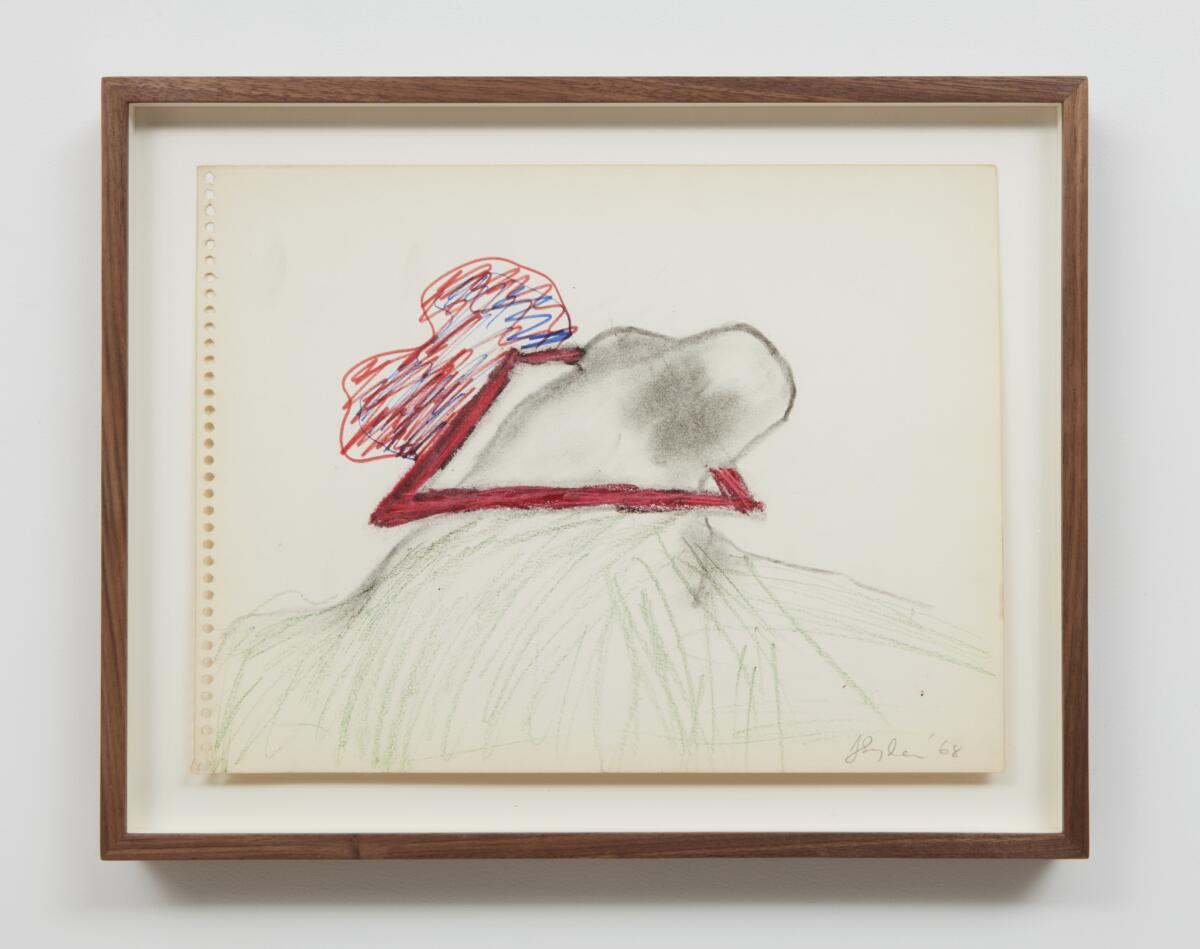Review: Forrest Bess and Joan Snyder paintings shine in a show that gets past the dark history
At Parrasch Heijnen Gallery, “Forrest Bess/Joan Snyder” brings together works by two very different artists to accomplish somewhat different goals: 1) to point out exactly what’s going on in the work of each painter, and 2) to tug Bess’ art out from under the shadow of his life story, which is heart-wrenching.
In the first gallery hang 10 little paintings that Snyder (born 1940) made in 1967 and 1968 on pages unceremoniously torn from a spiral sketchbook. In the second gallery hang 14 compact oils that Bess (1911-1977) painted on canvas and Masonite in the 1940s, ’50s and ’60s.
The compare-and-contrast exercise pays off in spades. The works by Snyder and Bess have lots in common. Both are intimate. Both are ambitious. And both are abstract but not purely so. Hints of imagery occasionally appear, along with the suggestion of spatial depth. Scale is ambiguous — shifting from cellular to cosmic, and back.
Color counts for both artists — particularly when solid chunks of pink and blue, red and black, or brown and white grind together. Compositions, riven by internal tensions, keep harmony and resolution out of the picture.
And that’s where the greatest contrasts come into focus.

Snyder’s works on paper, made of spray paint, pastel, pencil, charcoal and marking pens, suggest that no single material — or approach to mark-making — has the capacity to capture the complexity of reality. Her elusive abstractions make a virtue of keeping one’s options open.
Bess’ rock-solid compositions move in the opposite direction. One foot is firmly planted in the reality we see with our eyes, while the other is firmly planted in the reality our souls sense. His blunt compositions strive to hold both together.
Some, like “Mandala,” “Untitled (Pink Moon)” and “The Noble Carbunkle” succeed, making it seem that square pegs sometimes fit in round holes. Others, like “Family Group,” “Untitled No. 6” and “Untitled (Rainbow With Arc)” intimate that the world is out of sync with itself — and that there may be no hope for repair, much less redemption.

SIGN UP for the free Essential Arts & Culture newsletter »
These are among Bess’ most potent works. The emotions they embody resonate against his biography, which includes dropping out of college, having a psychological breakdown that ended his World War II service, pursuing a hermit-like existence on the Gulf Coast of Texas and undergoing DIY surgery on his genitals in the belief that it might make him a more well-rounded human.
“Forrest Bess/Joan Snyder” gives art its due, neither glossing over the context from which it came nor letting history tell the whole story. That makes room for viewers, each of us invited to interpret the art for ourselves.
Parrasch Heijnen Gallery, 1326 S. Boyle Ave., L.A. Through June 24. Closed Sundays and Mondays. (323) 943-9373, www.parraschheijnen.com

Support coverage of the arts. Share this article.
MORE ART STORIES:
LACMA plans radical change for how we see the permanent collection
The strange, surreal photography of Heather Rasmussen
Male or female? Black or white? The paintings of Lezley Saar play with expectations
Meet Robin Bell, the artist who projected protest messages onto Trump's D.C. hotel
The biggest entertainment stories
Get our big stories about Hollywood, film, television, music, arts, culture and more right in your inbox as soon as they publish.
You may occasionally receive promotional content from the Los Angeles Times.



